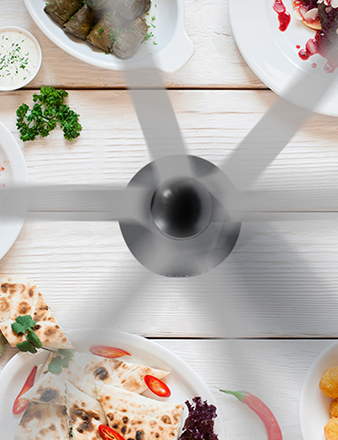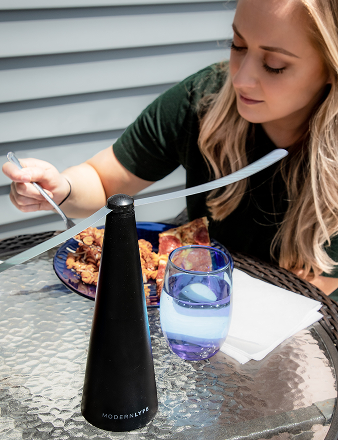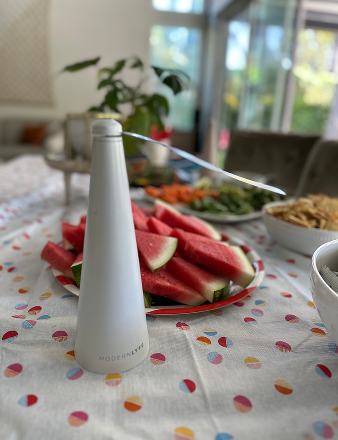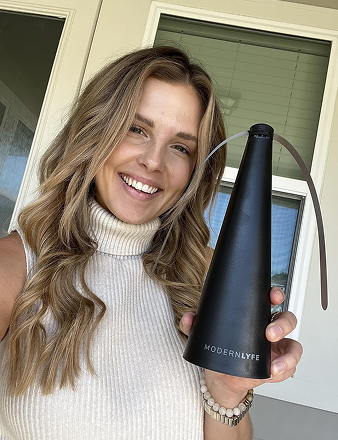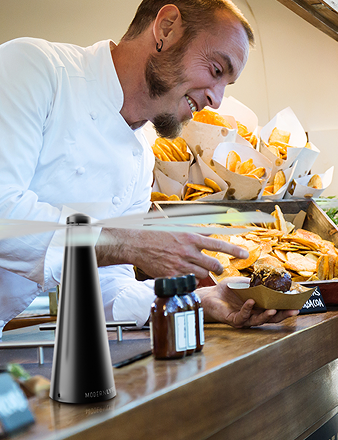When fruit flies invade, you need a simple three-step attack: eliminate their food, trap the adults, and make your home a place they want to avoid. Your first move is always to clear ripening produce from your counters, clean up spills, and, most importantly, tackle your sink drains. After that, a simple DIY trap using apple cider vinegar and a drop of dish soap will take care of the rest.
Your Immediate Action Plan for Fruit Fly Control
One day your kitchen is clean, and the next, a cloud of tiny specks materializes out of nowhere. It's a classic fruit fly invasion. This isn't just an annoyance; it's a sign that these pests have found the perfect spot to eat and breed in your home. To win, you need to act fast.
To get rid of them, you have to think like a fruit fly. They're on a mission for one thing: fermenting organic material. The mushier, the better. This is where they eat and lay their eggs. Since a single female can lay up to 500 eggs in her short life, a few flies can explode into a full-blown infestation in days. Your goal is to cut them off at the source.
Understanding Their Rapid Lifecycle
What makes fruit flies so persistent is how quickly they multiply. The entire cycle, from egg to adult, can happen in as little as 8 to 10 days.
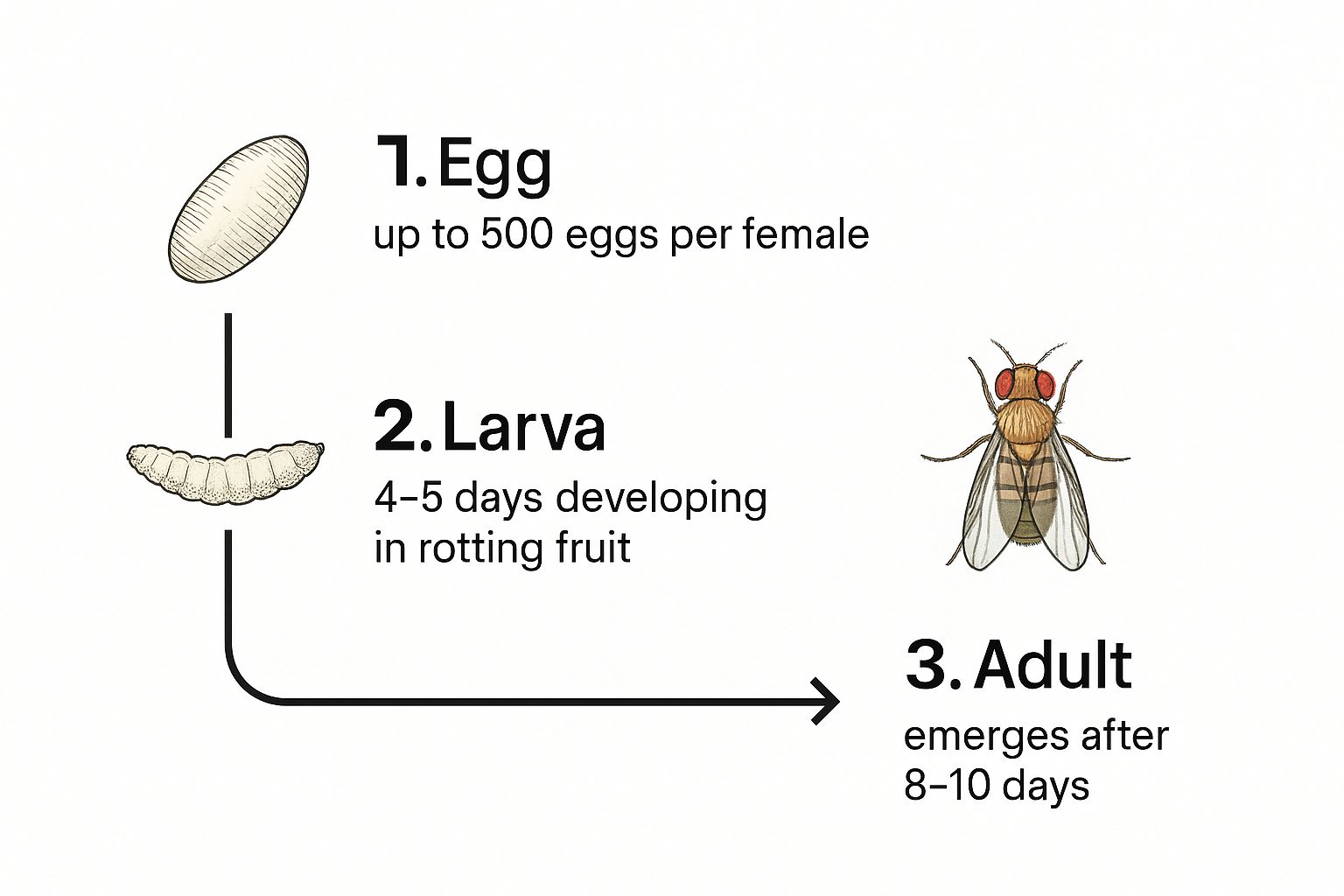
This image makes it clear: by the time you see adult flies, they've likely already laid hundreds of eggs somewhere hidden. This is why simply trapping the adults you see is a temporary fix, not a long-term solution. You have to stop the next generation before it takes flight.
Here’s a clear summary of your first critical steps. These are non-negotiable actions to take the moment you spot these pests.
Immediate Actions to Control Fruit Flies
| Action Area | What to Do Immediately | Why It Works |
|---|---|---|
| Kitchen Counters | Move all fruit and vegetables into the refrigerator. | Cold temperatures stop the fruit fly breeding cycle and cut off their food source. |
| Pantry & Storage | Find and discard any overripe, bruised, or rotting produce. | This removes the primary breeding grounds where females lay their eggs. |
| Sinks & Drains | Pour baking soda and vinegar down the drain, then flush with boiling water after 15 minutes. | It cleans out the organic gunk and buildup in your pipes, a favorite hidden nursery for flies. |
| Surfaces & Spills | Wipe down all surfaces, including countertops and the inside of trash cans, with cleaner. | Eliminates sticky residues and spills (juice, wine, etc.) that feed adult flies. |
Taking these actions immediately will drastically cut down the number of flies and, more importantly, stop the infestation from getting worse.
Your 24-Hour Checklist
The first 24 hours are critical. Skip the complex solutions and focus on these high-impact tasks to take back your kitchen.
- Quarantine Your Produce: Get all fruit and vegetables off the countertops. The fridge is your best weapon; fruit flies can't survive or breed in the cold.
- Toss the Bad Apples (and Bananas): Inspect your fruit bowl and pantry. That one forgotten, mushy banana or soft tomato is a five-star resort for fruit flies. Get it out of the house.
- Deep Clean Your Drains: Your sink drain is dark, wet, and filled with food particles—a perfect nursery. A simple trick is to pour a cup of baking soda down the drain, followed by a cup of white vinegar. Let it fizz for 15 minutes, then flush it all with boiling water.
- Wipe Everything Down: Grab your favorite cleaner and wipe every surface, focusing on sticky spots from spilled juice, wine, or crumbs. Don't forget to wipe out the inside of your trash can.
The biggest mistake people make is focusing only on the adult flies. Real victory comes from destroying their breeding grounds. If you don't eliminate the source, you'll be stuck in a never-ending cycle of swatting and trapping.
By taking these aggressive first steps, you'll make a huge dent in the fruit fly population and set the stage for a completely fly-free home.
Why Fruit Flies Are Suddenly Everywhere
If it feels like fruit flies just appear out of thin air, you’re not alone. One minute your kitchen is clean, and the next, a cloud of pests is hovering over your fruit bowl. This isn't magic; it’s biology on hyper-speed. To beat a fruit fly problem, you have to understand how they operate.
They don't just appear. Most of the time, they're expert hitchhikers. A single fly—or more likely, its invisible eggs—rides into your home on produce from the grocery store. That bunch of bananas or bag of tomatoes can be a Trojan horse.
Once inside, they seek out the perfect nursery: any spot with fermenting organic matter. It's not just rotting fruit. Think about the dregs of a wine bottle, the gunk in your garbage disposal, or even a damp sponge by the sink.
The Incredibly Fast Breeding Cycle
The real problem, and why a few flies become an infestation so fast, is their rapid reproductive cycle. A single female fruit fly can lay up to 500 eggs in her short life.
It gets worse. Those eggs hatch into larvae (maggots) in just 24-30 hours. The entire lifecycle, from egg to a flying, breeding adult, can take only 8 to 10 days. This exponential growth means that by the time you notice a few flies, a second or third generation is already on the way.
My biggest piece of advice: don't just focus on the adult flies you see. If you aren’t actively eliminating their breeding grounds, you're fighting a battle you can't win. Every day you wait, hundreds of new flies are preparing to hatch.
This is why just swatting and setting out a single trap often feels useless. You have to break the cycle.
How They Get Inside Your Home
While store-bought produce is the #1 culprit, it’s not their only way in. Fruit flies are tiny and can slip through the smallest openings.
Here are their most common entry points:
- On Your Groceries: Eggs or larvae are often already on the fruits and vegetables you buy.
- Through Small Openings: They can fly in through open doors and windows. A tiny tear in a window screen is a wide-open gate to them.
- Up Through the Drains: In apartments or connected homes, they can travel up through plumbing from shared drain lines.
Knowing this shifts your mindset from cleanup to prevention. Once you understand their entry routes and fast breeding, you can build a real defense. This means thinking about what’s inside your home and what’s happening right outside. For tips on that, check our guide on how to keep flies away outside.
By understanding your opponent, you stop reacting to a nuisance and start making your home a place where they simply can't thrive. This proactive approach makes all other methods—from traps to deep cleaning—far more effective.
Making Your Home a No-Fly Zone for Good
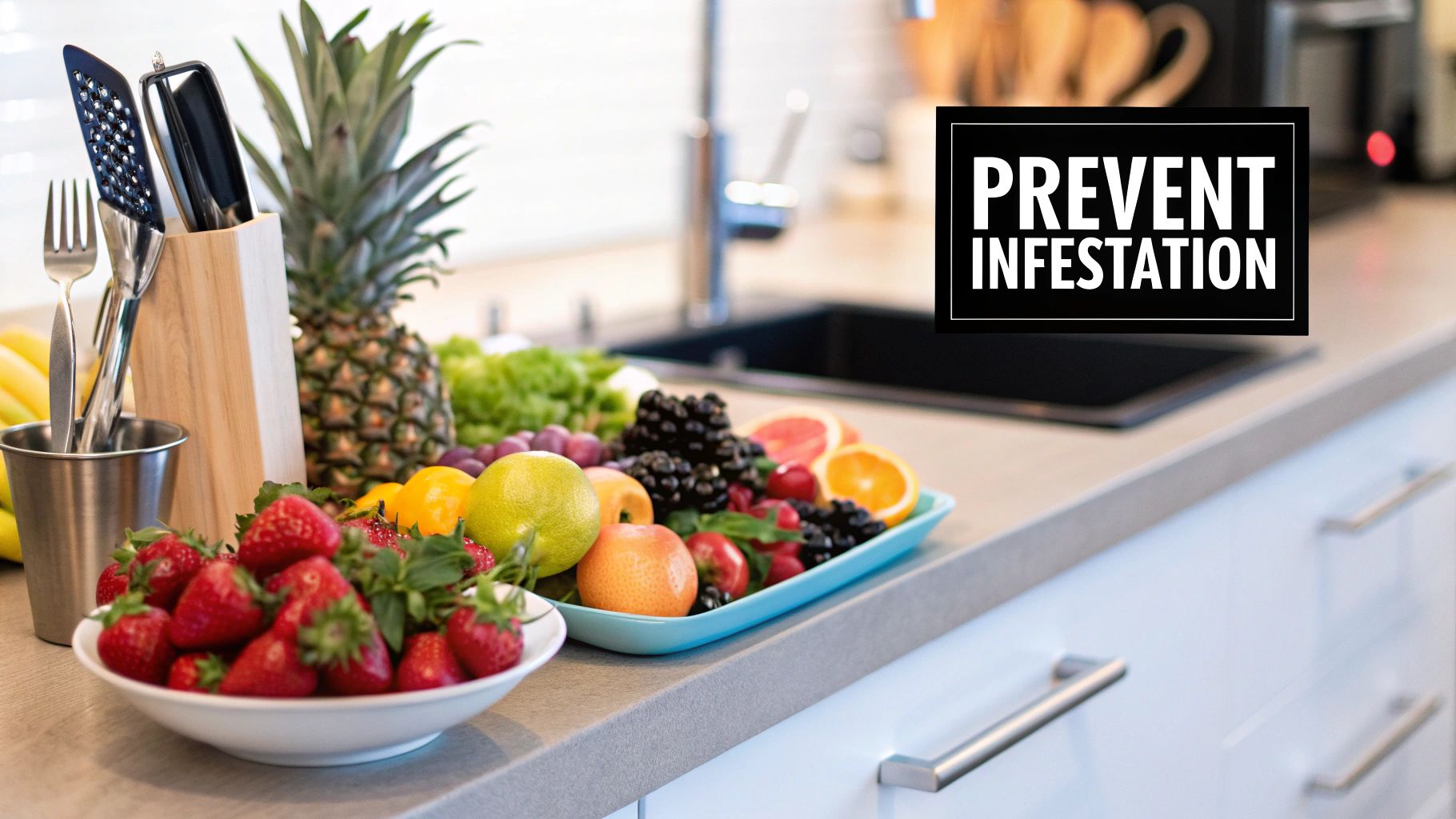
After you've cleared an active fruit fly problem, you don't want a repeat. The key to long-term success isn't just reacting to an invasion; it's making your home unattractive to them in the first place.
This is all about prevention. Adopt a few simple, consistent habits that remove their food and breeding opportunities. Think of it as building a defensive perimeter that makes your kitchen a place they just pass by.
Get Smart About Fruit Storage
Let’s be real: that beautiful fruit bowl on your counter is an open invitation. How you handle produce is the single biggest factor in keeping fruit flies away.
The moment you get produce home, give it a quick, gentle rinse. Microscopic eggs are often already on the skin. After washing, your refrigerator is your best friend. Storing most fruits and veggies in the cold not only keeps them fresh longer but also stops any potential fly lifecycle cold.
Of course, some things like tomatoes need to ripen on the counter. Just keep a close watch. As soon as a banana gets too brown or an avocado feels soft, it’s time to use it, move it to the fridge, or toss it. A single forgotten piece of fruit can restart an infestation.
Don't Forget the Hidden Hotspots
Fruit flies are resourceful. They don't just go for the obvious stuff; they seek out grimy, hidden spots. Your kitchen drain and garbage disposal are a five-star resort for them—dark, damp, and full of the decomposing gunk they love.
Neutralizing these breeding grounds is simple. Make this part of your weekly cleaning routine:
- Pour a half-cup of baking soda down the drain.
- Follow it with a half-cup of white vinegar. Let it fizz and clean for 15-20 minutes.
- Finally, flush everything with a kettle of boiling water to wash away loosened debris, eggs, and larvae.
This is far more effective than pouring bleach down, which just flows past the buildup without dissolving it.
Pro Tip: Consistent drain cleaning is non-negotiable. A clean drain offers them nothing—no food, no shelter. It's a simple step that forces them to move on.
Lock Down Your Trash and Recycling
Your main trash can is an obvious fly magnet, but don't ignore your recycling bin. That bit of wine left in a bottle, the sugary film in a soda can, or the dregs from a juice carton are all powerful attractants.
Get in the habit of rinsing all cans and bottles before you toss them in the recycling. It takes seconds and removes a huge food source. For your kitchen trash, always use a can with a tight-fitting lid. Most importantly, take it out often, especially if it’s full of food scraps. Letting it sit overnight is asking for trouble.
When you're eating or hosting, especially outdoors, physical deterrents are a game-changer. The best fly repellent fan can create a bug-free zone around your table, keeping your food safe without sprays or chemicals. These small, combined efforts create a robust defense and stop fruit flies from ever becoming a problem again.
Going on the Offensive: How to Trap the Fruit Flies You See
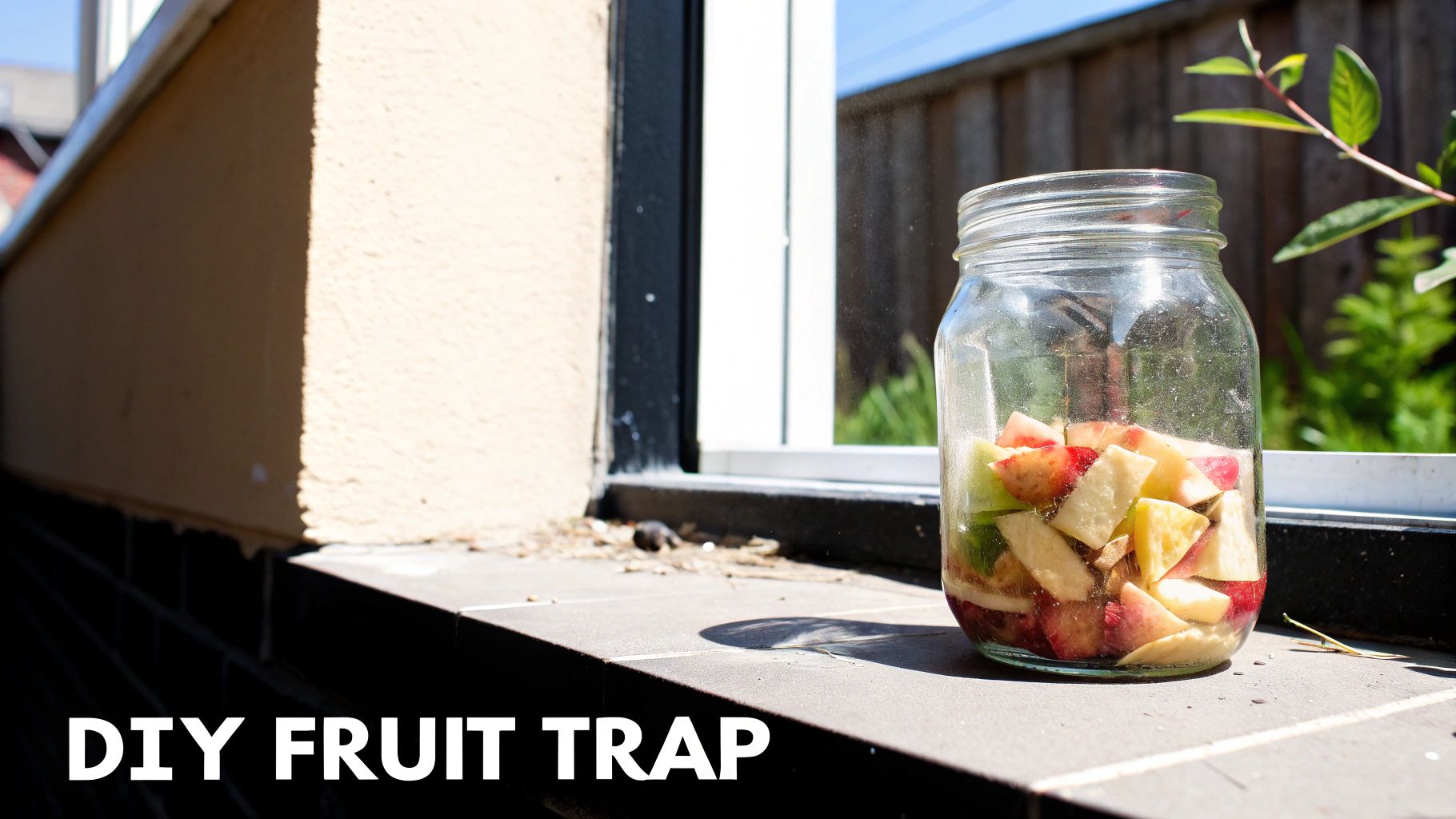
After you’ve cleaned your kitchen and cut off their food supply, you still have to deal with the adult flies buzzing around. This is where trapping comes in. The goal is simple: capture the survivors before they can lay another round of eggs.
The good news is you don't need harsh chemicals. Fruit flies have a major weakness for anything that smells like it's fermenting, and you can use that against them with things you already have in your pantry.
The Classic DIY Vinegar Trap: Your First Line of Defense
This is the go-to method for a reason: it works. The key is a simple mix of apple cider vinegar (ACV) and dish soap. The ACV smells exactly like the overripe fruit adult flies are programmed to seek out. They can't resist investigating.
But the vinegar alone won't work. The secret is adding a few drops of dish soap, which breaks the liquid's surface tension. When a fly lands for a sip, it sinks instead of standing on the surface.
I've seen countless people make a vinegar trap and forget the soap. That's just setting up a happy hour for the flies. They'll drink and fly away unharmed. The soap is what makes the trap lethal.
Here’s how to build one in 30 seconds:
- Grab a small bowl or jar and pour in about an inch of apple cider vinegar.
- Add 2-3 drops of liquid dish soap. Swirl gently to mix.
- Set the trap wherever you see the most flies—usually near the sink, trash can, or where your fruit bowl used to be.
To make it even more effective, stretch plastic wrap over the top, secure it with a rubber band, and poke a few small holes in it. This creates a funnel they can easily enter but can't easily escape.
When to Bring in Commercial Options
Sometimes a DIY trap isn't enough, especially with a stubborn infestation. That’s when it’s worth looking at commercial traps. They offer more convenience and, in some cases, more power. The demand for these solutions is massive; the global fruit fly control market was valued at $5 billion in 2019 and keeps growing. You can get a deeper look at this trend over at Data Insights Market.
Here’s a quick rundown of your options:
| Trap Type | The Good | The Bad |
|---|---|---|
| Sticky Traps | Highly effective and give you a clear, visual sign of how many you're catching. | Can look gross once they start working and might catch other harmless bugs. |
| Pre-filled Lure Traps | Super convenient, no mixing or spills, and often designed to blend in with your decor. | Can get pricey if you need a lot of them, and some brands are more effective than others. |
| Electric Zappers (UV Light) | Kills a wide range of flying pests, not just fruit flies, and the kill is instant. | The "zap!" can be startling, and they need an outlet and work best in darker areas. |
So which should you choose? For a minor problem, a couple of well-placed DIY vinegar traps are usually enough. But if the flies won’t quit, or if you’re managing this in a business, combining commercial lure traps with a plug-in zapper can deliver the knockout punch you need.
What To Do When Fruit Flies Just Won't Go Away
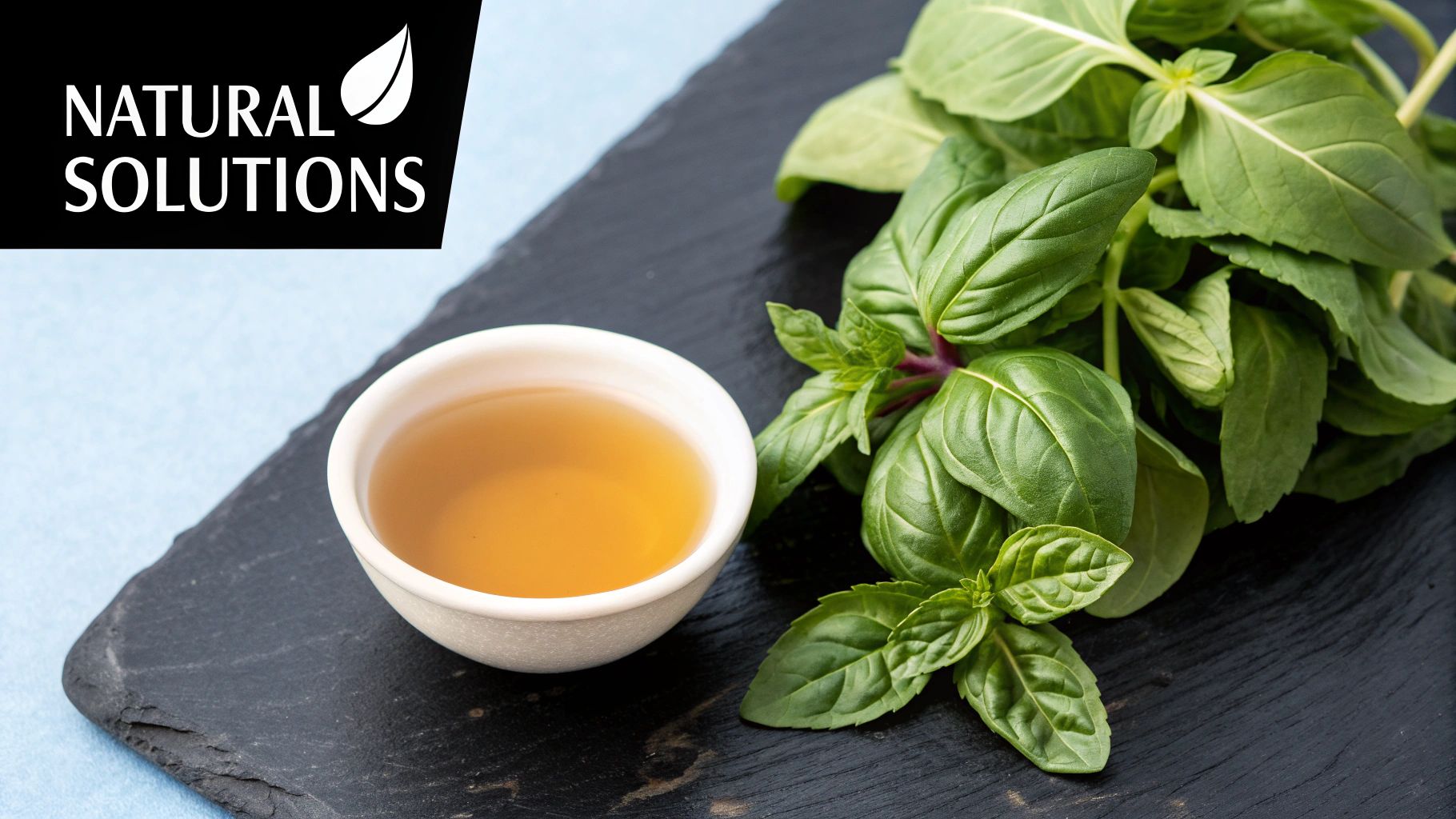
You’ve deep-cleaned the kitchen, scrubbed the drains, and set out an army of vinegar traps. Yet, the fruit flies are still buzzing around like they own the place. It's incredibly frustrating.
When a fruit fly problem lingers, it’s almost never about your traps failing. It’s a sure sign you’ve missed a hidden breeding ground. The real issue is that they're reproducing faster than you can catch them. It's time to play detective and think beyond the fruit bowl.
Expanding Your Search For The Source
If the standard cleaning playbook hasn't worked, you need to search wider. Fruit flies are masters at finding overlooked spots with just enough moisture and gunk to lay their eggs. Honestly, the culprit is usually somewhere you’d never think to check.
Here are the most common, less-obvious nurseries for fruit flies:
- Damp Sponges and Mops: That sour-smelling dish rag or the mop head you forgot to dry out? It’s a five-star resort for a fruit fly family.
- Forgotten Bags: Check backpacks, gym bags, and reusable grocery totes. I once battled an infestation for a week, only to discover my son had left a half-eaten banana in his school bag. It was ground zero.
- Houseplant Soil: If your soil is always soggy, it can attract fungus gnats, which look nearly identical to fruit flies. If the pests are hanging out near your houseplants, this is a likely cause.
- Spills Under Appliances: That bit of juice that dribbled under the fridge or the sticky residue behind the microwave is more than enough to sustain a population.
When an infestation won't quit, assume the source is somewhere you haven’t looked. A single rotting potato in the back of the pantry can produce hundreds of flies.
When To Escalate And Call A Professional
Sometimes, even with your best detective work, the problem is too entrenched to solve on your own. If you’ve been fighting a losing battle for weeks or the flies are in multiple rooms, it might be time for backup.
This isn't just a household annoyance; it can be a massive issue. For context, the United States recently battled its most severe invasive fruit fly outbreak in 70 years, forcing the USDA to allocate over $100 million to fight the agricultural threat. It's a sobering reminder of how quickly these pests can escalate.
Calling a pest control expert isn’t giving up; it’s a smart, strategic move. Professionals have tools and experience to find and destroy breeding sites in places you can't reach, like inside wall voids, under floorboards, or deep in your plumbing.
If your DIY efforts aren't cutting it, an expert can offer a definitive solution and give you back your peace of mind. For more immediate strategies, check our guide on how to keep flies away from your food.
Frequently Asked Questions About Fruit Flies
https://www.youtube.com/embed/0y48Yj_VNj4
Even after you've cleaned and set traps, some questions about fruit flies always pop up. I’ve pulled together the most common ones to give you clear, straightforward answers.
Why Do Fruit Flies Suddenly Appear in My Clean Kitchen?
It's a common frustration: you keep a spotless kitchen, yet suddenly, they appear. Fruit flies are sneaky. They often hitch a ride into your home on produce or find their way through tiny tears in window screens.
Their entire lifecycle, from egg to adult, takes only about a week. This means one pregnant female can start an infestation that seems to appear from nowhere. A bit of moisture in a drain or a stray crumb under an appliance is all the invitation they need.
Are Fruit Flies the Same as Gnats?
People mix these up all the time, but no, they're different. Fruit flies are usually tan or brownish with red eyes and are obsessed with the fermenting sugars in overripe fruit and spills.
Gnats, on the other hand, are typically darker, almost black, and look more like tiny mosquitoes. If the pests are swarming your houseplants, you're almost certainly dealing with fungus gnats, which are attracted to damp soil. That requires a different approach focused on your plants, not your kitchen.
The scale of a fruit fly problem can be staggering. Scientific studies show just how pervasive these pests are. One study recovered 22,169 fruit flies from just three types of crops in a single region. You can learn more about these pest distribution findings from PLOS ONE.
Can Fruit Flies Make You Sick?
For the most part, fruit flies are just a major nuisance. However, they can potentially spread germs. They hang out in damp drains, garbage disposals, and rotting food before landing on your countertops or fresh fruit.
While the odds of them causing a serious illness are low for most healthy people, a large infestation is a definite hygiene red flag. Getting rid of them is a key step in keeping your food prep areas sanitary.
How Do I Clean Fruit Flies Out of My Sink Drain?
Your sink drain is a five-star hotel for fruit flies. Many people reach for bleach, but it flows past the gunk too quickly to be effective and can be harsh on your plumbing.
Here’s a better way:
- Pour one cup of baking soda down the drain.
- Follow it with one cup of white vinegar.
- Let the fizz work its magic for 15-20 minutes. This reaction breaks down the sticky film where flies lay their eggs.
- Finish by carefully flushing the drain with a pot of boiling water to clear out any leftover debris, eggs, and larvae.
Making this part of your weekly cleaning routine is one of the best ways to keep them from coming back.
For a stylish and effective way to keep flies away from your food during gatherings, trust Modern Lyfe to protect your tables with our elegant and quiet fly fans. Discover the perfect solution for your home or event at https://modernlyfe.com.

